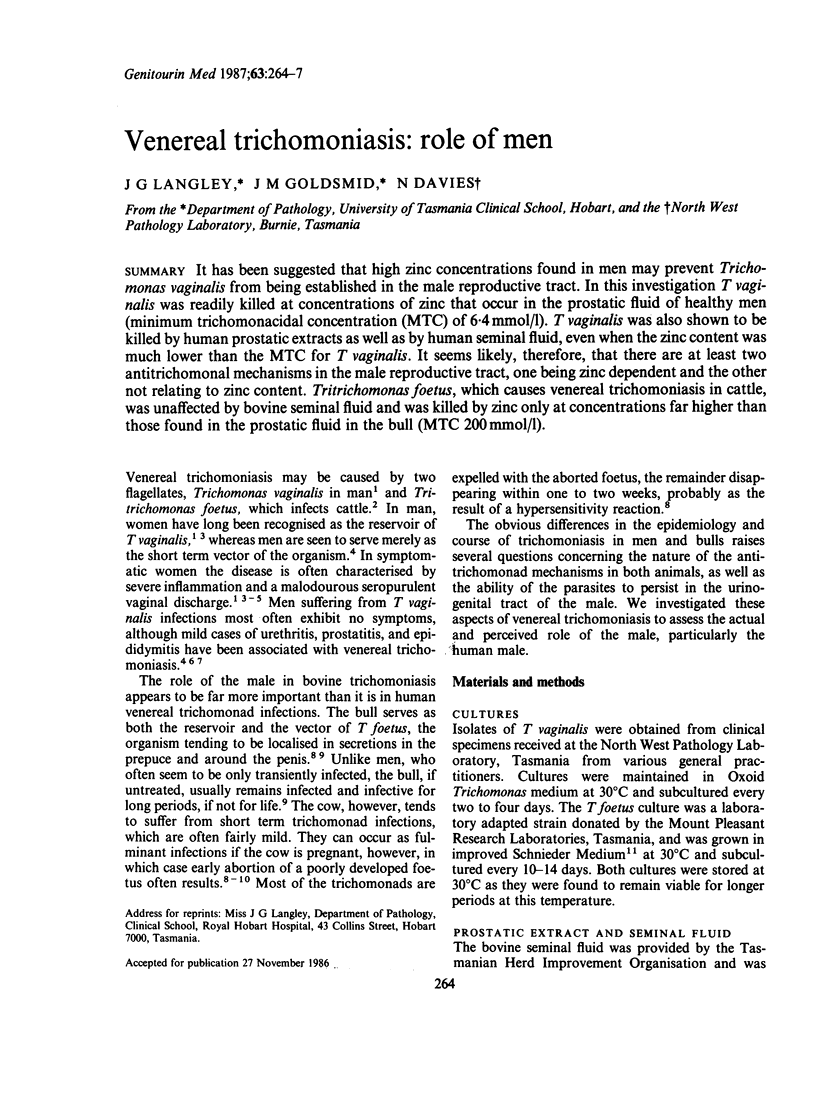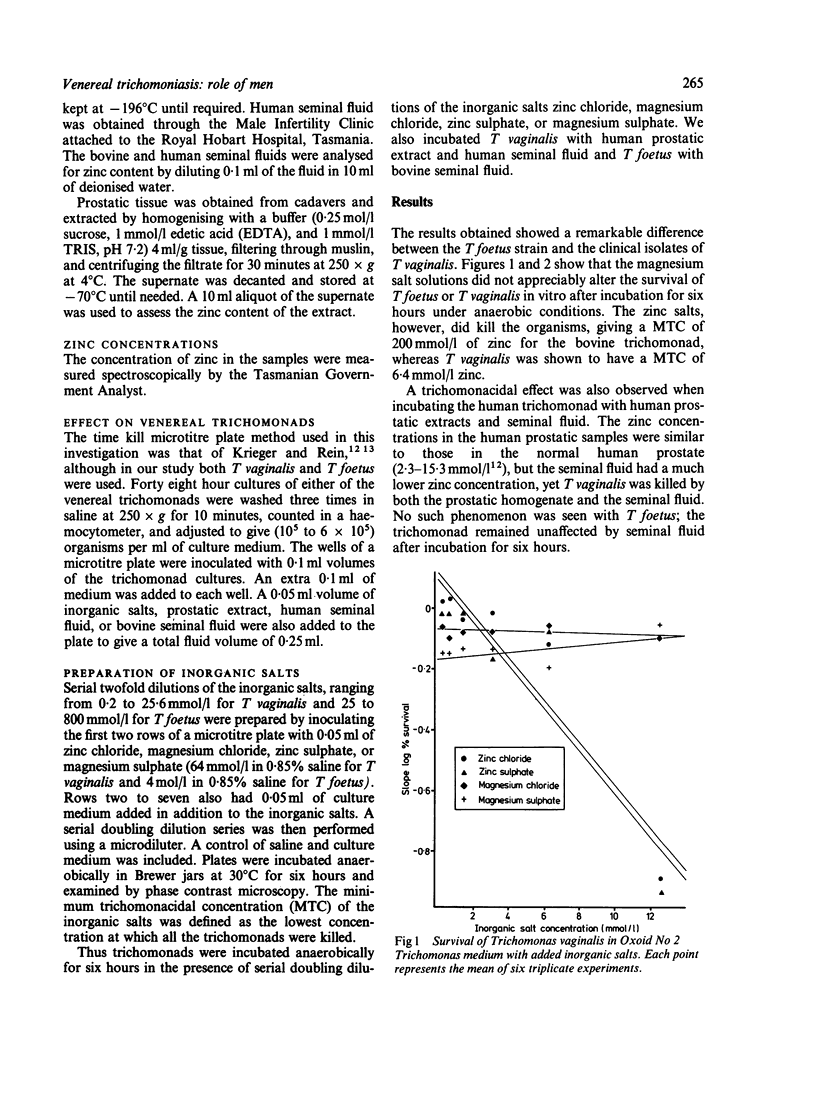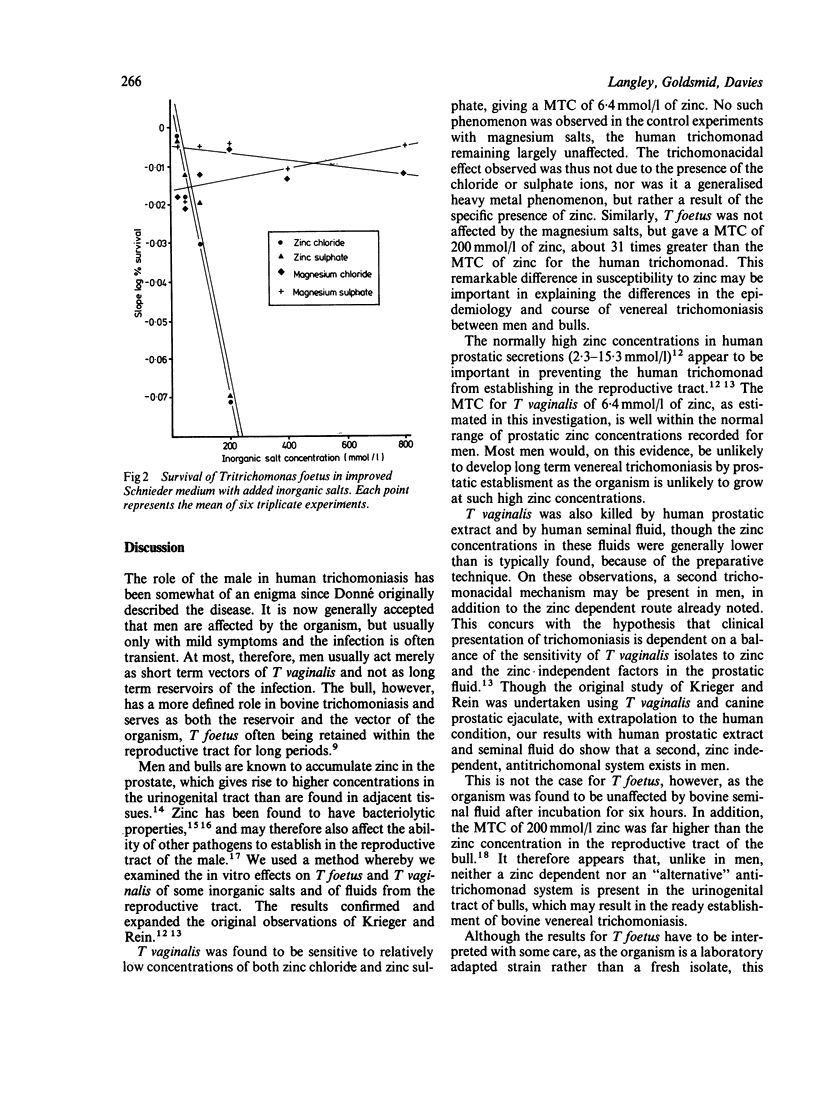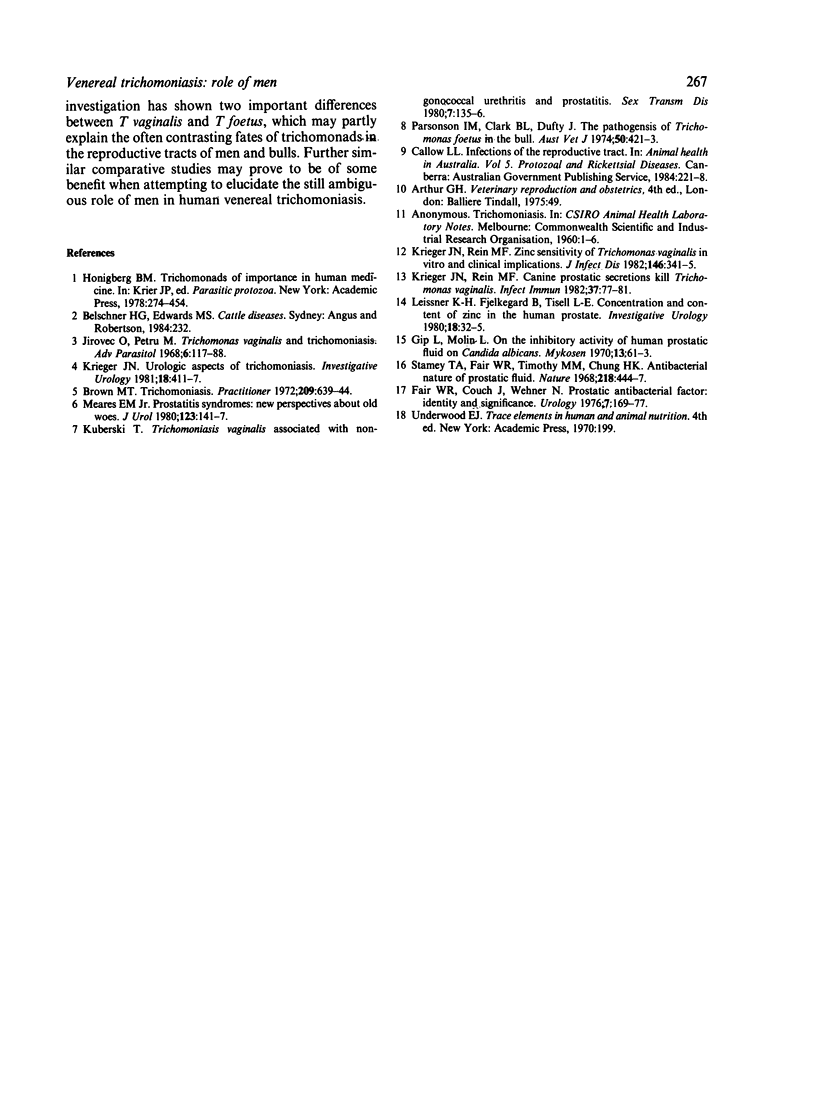Abstract
It has been suggested that high zinc concentrations found in men may prevent Trichomonas vaginalis from being established in the male reproductive tract. In this investigation T vaginalis was readily killed at concentrations of zinc that occur in the prostatic fluid of healthy men (minimum trichomonacidal concentration (MTC) of 6.4 mmol/l). T vaginalis was also shown to be killed by human prostatic extracts as well as by human seminal fluid, even when the zinc content was much lower than the MTC for T vaginalis. It seems likely, therefore, that there are at least two antitrichomonal mechanisms in the male reproductive tract, one being zinc dependent and the other not relating to zinc content. Tritrichomonas foetus, which causes venereal trichomoniasis in cattle, was unaffected by bovine seminal fluid and was killed by zinc only at concentrations far higher than those found in the prostatic fluid in the bull (MTC 200 mmol/l).
Full text
PDF



Selected References
These references are in PubMed. This may not be the complete list of references from this article.
- Brown M. T. Trichomoniasis. Practitioner. 1972 Nov;209(253):639–644. [PubMed] [Google Scholar]
- Gip L., Molin L. On the inhibitory activity of human prostatic fluid on Candida albicans. Mykosen. 1970 Jan 1;13(1):61–63. doi: 10.1111/j.1439-0507.1970.tb01159.x. [DOI] [PubMed] [Google Scholar]
- Jírovec O., Petrů M. Trichomonas vaginalis and trichomoniasis. Adv Parasitol. 1968;6:117–188. doi: 10.1016/s0065-308x(08)60473-x. [DOI] [PubMed] [Google Scholar]
- Krieger J. N., Rein M. F. Canine prostatic secretions kill Trichomonas vaginalis. Infect Immun. 1982 Jul;37(1):77–81. doi: 10.1128/iai.37.1.77-81.1982. [DOI] [PMC free article] [PubMed] [Google Scholar]
- Krieger J. N., Rein M. F. Zinc sensitivity of Trichomonas vaginalis: in vitro studies and clinical implications. J Infect Dis. 1982 Sep;146(3):341–345. doi: 10.1093/infdis/146.3.341. [DOI] [PubMed] [Google Scholar]
- Krieger J. N. Urologic aspects of trichomoniasis. Invest Urol. 1981 May;18(8):411–417. [PubMed] [Google Scholar]
- Kuberski T. Trichomonas vaginalis associated with nongonococcal urethritis and prostatitis. Sex Transm Dis. 1980 Jul-Sep;7(3):135–136. doi: 10.1097/00007435-198007000-00010. [DOI] [PubMed] [Google Scholar]
- Leissner K. H., Fjelkegård B., Tisell L. E. Concentration and content of zinc in the human prostate. Invest Urol. 1980 Jul;18(1):32–35. [PubMed] [Google Scholar]
- Meares E. M., Jr Prostatitis syndromes: new perspectives about old woes. J Urol. 1980 Feb;123(2):141–147. doi: 10.1016/s0022-5347(17)55828-0. [DOI] [PubMed] [Google Scholar]
- Parsonson I. M., Clark B. L., Dufty J. The pathogenesis of Tritrichomonas foetus infection in the bull. Aust Vet J. 1974 Oct;50(10):421–423. doi: 10.1111/j.1751-0813.1974.tb06861.x. [DOI] [PubMed] [Google Scholar]
- Stamey T. A., Fair W. R., Timothy M. M., Chung H. K. Antibacterial nature of prostatic fluid. Nature. 1968 May 4;218(5140):444–447. doi: 10.1038/218444a0. [DOI] [PubMed] [Google Scholar]


